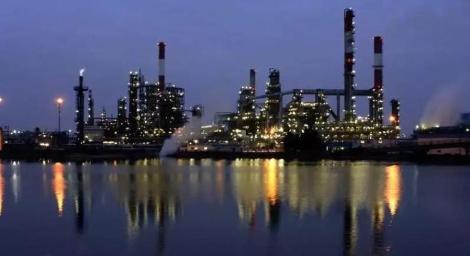Renovating outdoor lighting: the lighting project
octobre 2021
Agence pour l’Environnement et la Maîtrise de l’Energie (ADEME)
Subject to numerous economic, political and environmental issues, outdoor lighting, and in particular its management in public spaces, now appears to be a competence in its own right. For the past fifteen years, the price of electricity has continued to rise and, as a result, has put a strain on the budget of local authorities, which represents 1 billion euros each year in France. With an ageing and energy-intensive lighting stock, the territories have been addressing the issue for several years in order to limit consumption and therefore energy expenditure. Some have implemented coherent and ambitious renovation programmes on their own or on an inter-municipal scale. Despite the 500 million euros of annual investments made by local authorities to renew and modernise their public lighting systems, consumption remains high and the efforts made must be increased. Public lighting is now at the heart of the expectations of citizens, who are increasingly concerned about the way in which the city is administered, but also increasingly involved in environmental protection. Public lighting is a source of light pollution that contributes to the fragmentation of natural habitats. Intelligent management of lighting is therefore essential. The technological tools for this management already exist.
In addition, new needs are emerging in our territories: video protection, wifi terminals, electric vehicle charging stations, etc. Lighting infrastructures are increasingly in demand and should eventually become one of the means of pooling equipment for these new needs.
This is why it is becoming urgent to accelerate the renovation of the network and to make it communicative with a view to the development and planning of future intelligent territories. Public lighting is one of the major players in the ecological transition and a lever for action to limit light pollution and energy consumption. This guide published by ADEME should enable readers to gain a better understanding of the public lighting stock, to better grasp the issues at stake and to become players in its transformation.
À télécharger : ademe-eclairage-exterieur-2021.pdf (3,9 Mio)

It is also referred to as an urban lighting project because, although master lighting plans (SDAL) or lighting plans have existed for some thirty years, the project approach has evolved. It is above all an immersion in a territory with a quantitative analysis and a study of the environment in order to understand the existing situation and to carry out a qualitative analysis on the ground. It allows us to appreciate the nocturnal aspect of the site and to identify its own identity. Thus, the intrinsic qualities of each area make it possible to define an appropriate lighting scheme and to take into account the wishes of local residents, for example through night-time walks during which users can express their needs. Next, mapping is carried out by cross-referencing functional criteria (what level, where, what power, what equipment, etc.); then comes the study of the impact of lighting on biodiversity (see p. 20 and 21), the dynamics of nocturnal fauna, green spaces, etc., which makes it possible to carry out the project taking into account environmental criteria and in compliance with regulations.
A. A tailor-made project
There is no recipe, each project must be adapted to the size and needs of the community, but there are general methodological tools associated more and more often with specific criteria related to the conviviality and well-being of the users of each site. Today, sociologists, ecologists, landscape architects, urban planners, architects, electricians, lighting designers and lighting engineers work together, contributing their expertise to understand the neighbourhood’s polarities, active links and flows of people, and to define the identity and coherence of the project. This chronotopia enriches the approach by encouraging the experts to think about the site and the project in terms of sociological, biological, climatic and political timeframes.
B. Planning and the overall cost study
Once this mapping has been carried out, the designer plans the renovation of the lighting: how, with what type of equipment, and using interoperability as much as possible, because the lighting installation will last at least 20 years; modularity is therefore essential. Similarly, the solutions implemented must take into account the technical, human and financial resources available to the local authority to maintain the installation: how to do the best possible job by adapting the sophistication of the solutions to the reality on the ground, without incurring additional costs. A global cost study over the expected lifetime of the installation is essential to identify the offers that can be less costly in terms of energy, maintenance and upkeep, and to guarantee the sustainability of the operation.
C. Regulation plans
Finally, there is the question of lighting management according to zones: identifying the spaces where it is possible to lower the power, to use presence and movement detection when there is no one there, how to size maintenance, etc. This management can be done using a control system that is based on the energy consumption of the building. This management can be done through a good understanding of the territory and the available infrastructures and the habits of the users.
Références
En savoir plus
bibliography (french)
-
Dépenses énergétiques des collectivités locales, ADEME, Caisse des Dépôts, FNCCR, AITF, CEP. 2019.
-
Guide de l’élu local et intercommunal. Éclairage public. FNCCR. 2021.
-
Publications de l’Association française de l’éclairage relatives à l’éclairage extérieur.
-
Trame noire - Méthodes d’élaboration et outils pour sa mise en œuvre, par Romain Sordello, Fabien Paquier et Aurélien Daloz. Publié par l’Office français de la biodiversité, mars 2021.
-
Annexe SSL : Solid State Lighting, Association internationale de l’énergie.
-
Les défis de l’éclairage public, par Roger Narboni, Concepto, et Fanny Guerard, responsable éclairage public, smart city et environnement, ville d’Asnières-sur-Seine. Territorial Éditions. 2021.